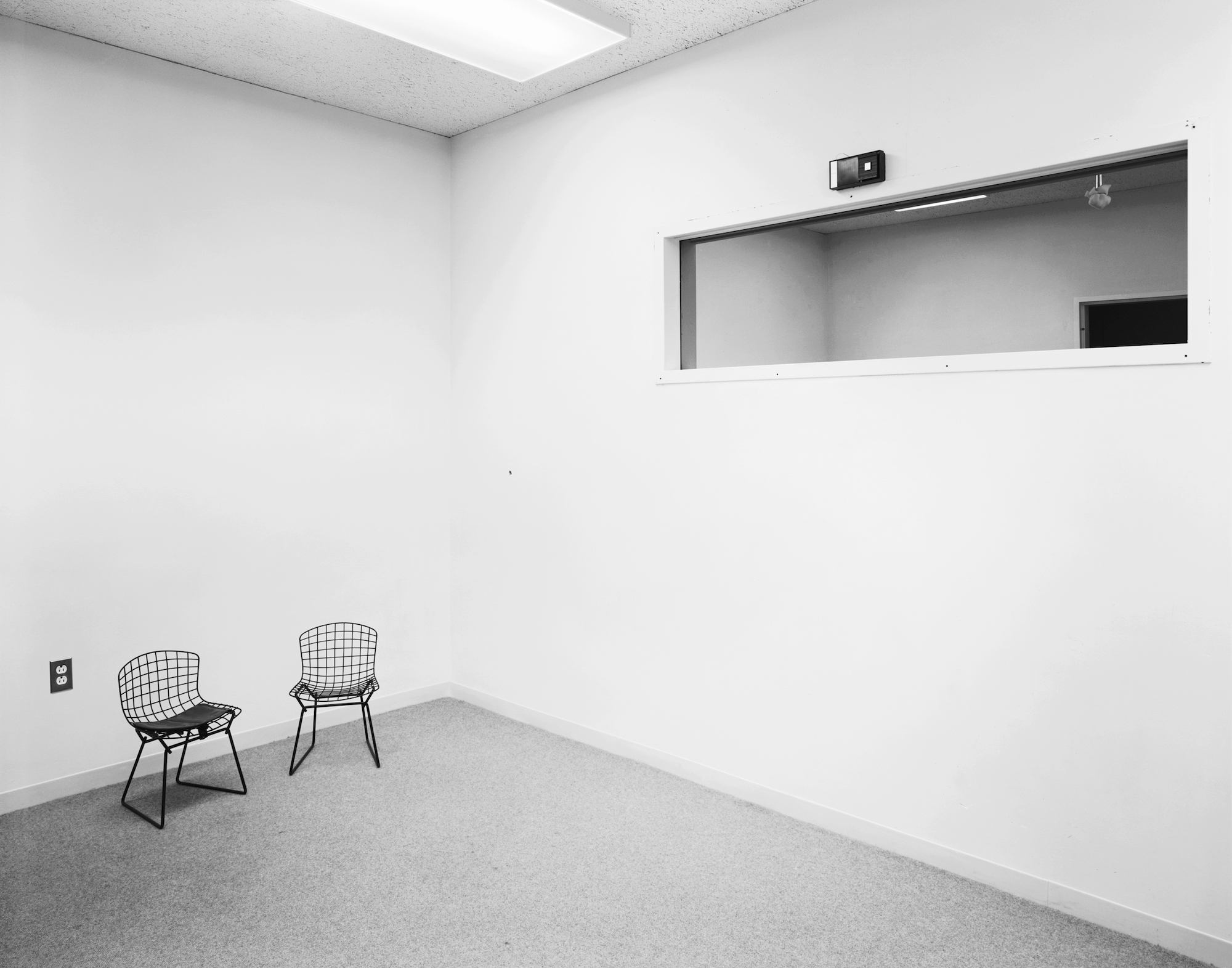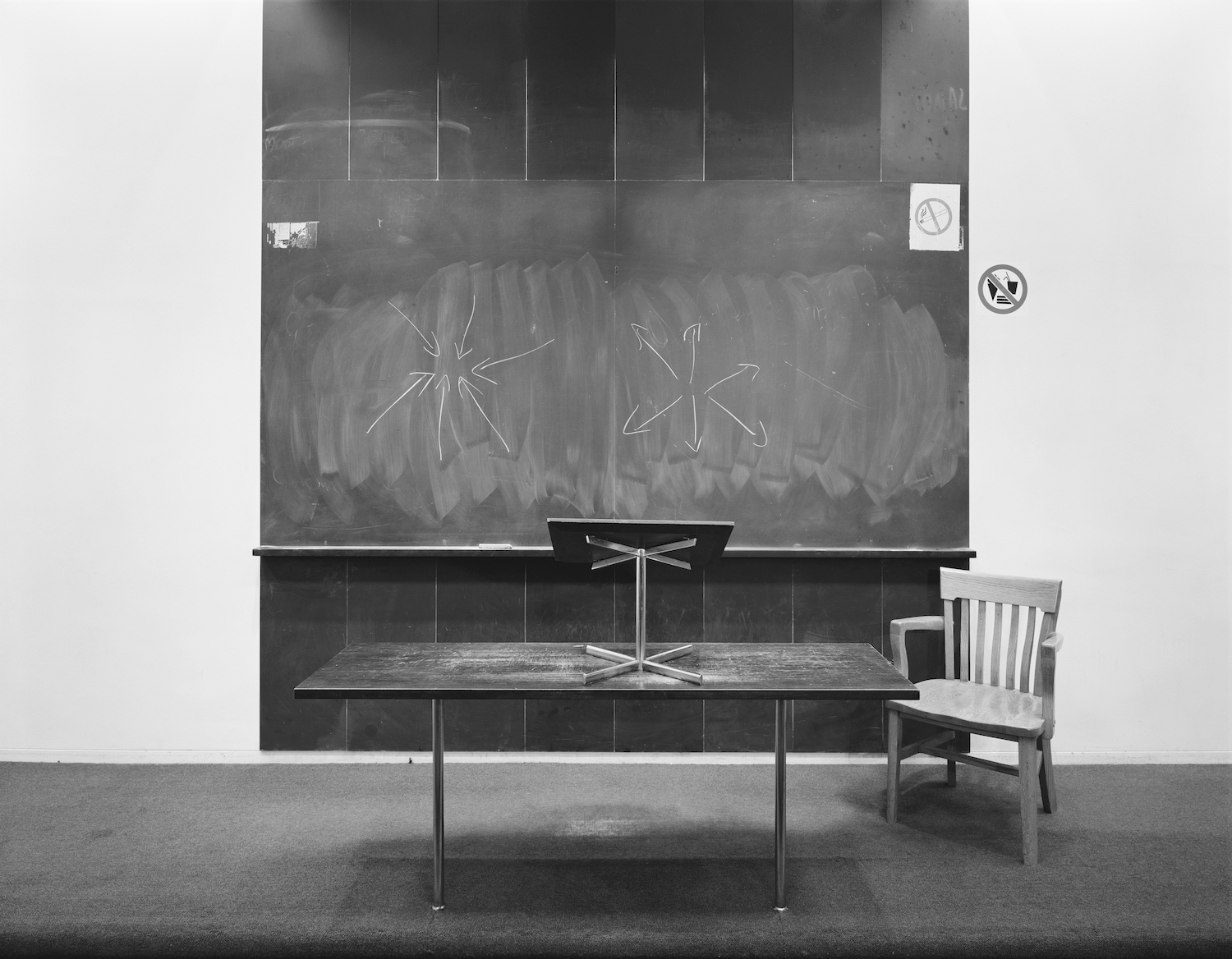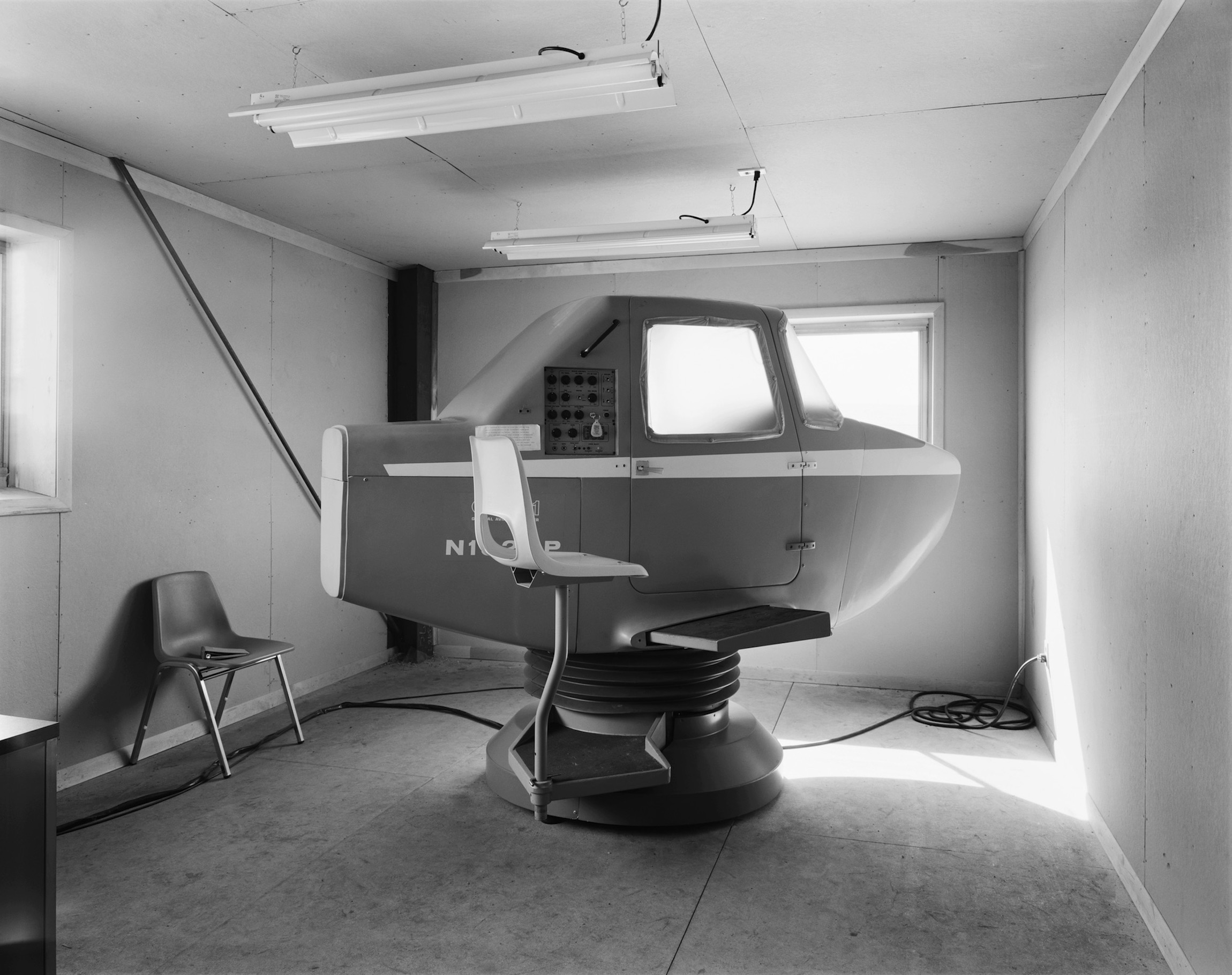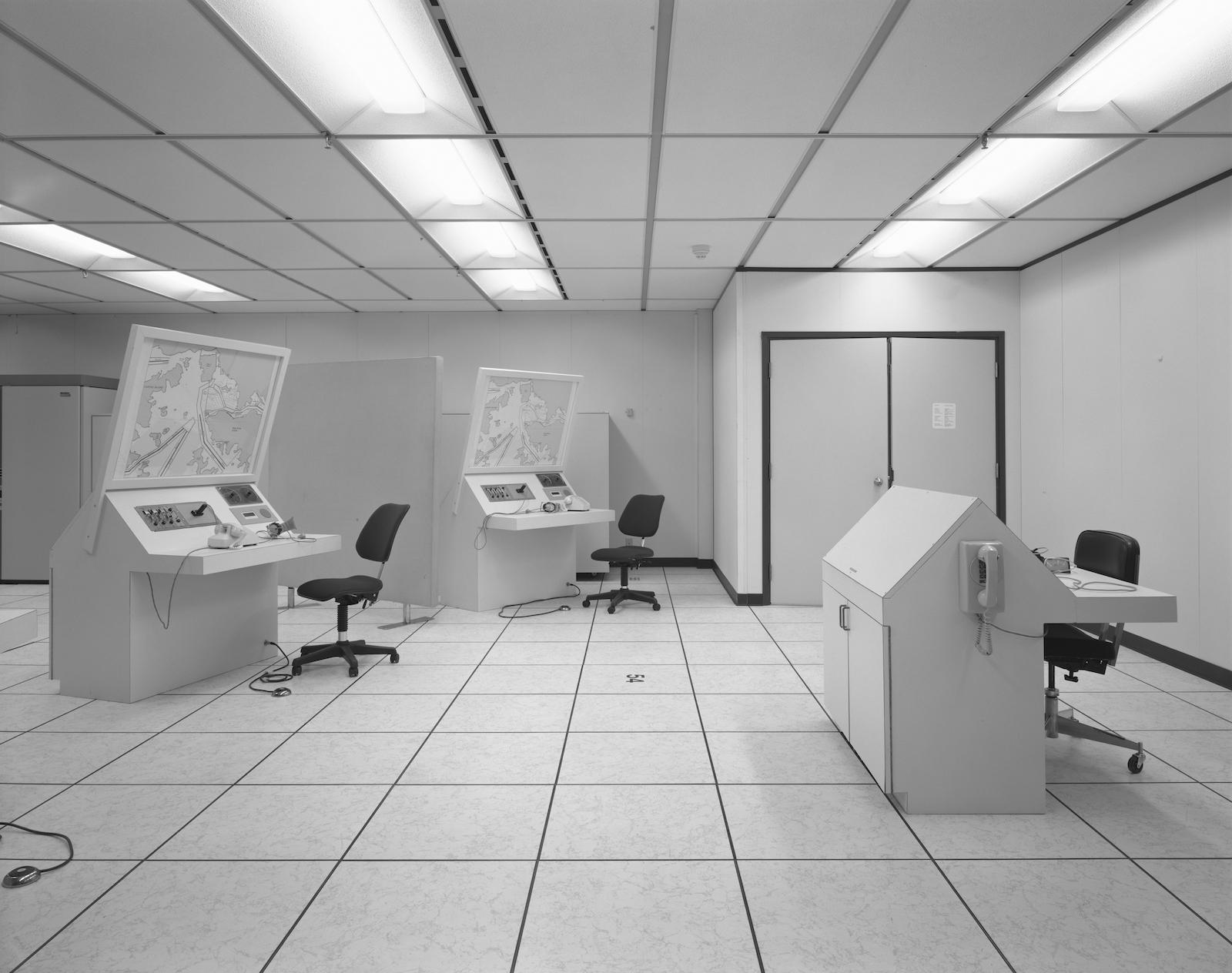Classroom, 1993. © Lynne Cohen. Andrew Lugg and Lynne Cohen Estate
All images © Centre Pompidou, MNAM-CCI/Philippe Migeat/Dist. RMN-GP
Two decades of the late American photographer’s work reflect on her passion for the performance of everyday spaces, and the ambiguity of human interference within them
American-born Lynne Cohen’s photographic oeuvre (1944-2014) was vast and bold. A selection of her images of interiors will be presented at the Centre Pompidou in Paris this spring, focusing on her début in the 1970s, and the evolution of her artistic practice over the following two decades. Although the show highlights recurring themes within her work, these recurrences didn’t narrow or even structure her approach. “You cannot really say that she did typologies,” says Matthias Pfaller, co-curator of the exhibition with Florian Ebner. “It’s not about any formalistic caprices or mannerisms… It’s really about showing the immense breadth of her work and all the places she covered.”
Cohen’s attraction to interiors aligned her with the tradition of Walker Evans, curator William Jenkins wrote in 1974, especially his 1966 book Message from the Interior, which “read like a blueprint of what Cohen was interested in,” Pfaller remarks. A vitrine in the exhibition groups work of Cohen’s that looks especially Evans-esque: “the visual influence is striking,” Pfaller says. She photographed diversity within a theme, such as all sorts of classrooms: at culinary schools, for veterinarians, flight schools with plane simulators, at beauty schools. Across hundreds of images of banquet halls, she highlighted how people appropriate generic or standardised structures for their individual needs. She photographed observation rooms in universities and hospitals, honing in on the motif of the window. “This is the most meta thing she ever did,” Pfaller notes. “These observation rooms with their windows are like the viewfinder camera, the camera lucida.”

Cohen wouldn’t hesitate to slightly move things around before taking a picture, and she didn’t force herself to be a completist or systematic: “if she didn’t find something interesting, she would just let it go,” Pfaller noted. All the settings she photographed felt ambiguous, with Pfaller noting of the spatial conflation: “there are so many clubs that look like waiting rooms… And then the waiting rooms would look like offices and the offices would look like showrooms, so the borders — like this term ‘fuzzy boundaries’ in linguistics — are really fluid.” The ambiguity went further in that the spaces were always people-free, rendered slightly strange as inhabited-but-not. Although meant to greet people, the spaces seemed absurdist when devoid of human presence and stripped of activity.
Though mostly chronicling North American spaces, Cohen travelled too. In the mid-‘90s, she went on lectureships throughout Europe. One photograph in the exhibition features a travel agency in Dusseldorf, Germany. Cohen did not want to generalise that this travel agency stands for German travel agencies: “There’s definitely not this desire to pin it down,” Pfaller clarified. Instead, her photographs have a flattening effect, a sense of universality.


Critics framed Cohen’s work as Foucauldian, but she refuted this, finding it more akin to Jacques Tati, specifically [the 1960s movie set in an impersonal office] Playtime. “Why do we love Playtime?—because we can identify with these mishaps and slapstick performances in everyday life,” Pfaller notes, connecting this reference to the sense of humour in Cohen’s work, which looks askance at what lies before the camera. In The Guardian, Cohen once described her own work as ‘deadpan.’ (“I like a photograph to be deadpan, so that my presence is alluded to as little as possible.”) She consistently used an 8×10 inch view camera, yielding neutrality and gravitas. Her later work included images of military installations, police target ranges, hunter shooting ranges, and laboratories that read much eerier and estranged from everyday life. Although there’s a different weight to such spaces, relative to the banquet halls and classrooms, the gaze is just as steadily impassive, and a dark, droll folly radiates.
In the exhibition, we discover Cohen’s background in printmaking and sculpture. Her initial training never dissipated, however, and she felt that places she photographed embodied a sculptural quality. Neighbouring Cohen’s work is that of French photographer Marina Gadonneix: shown separately but within the same space. The pairing “makes this bridge of 50 years of photography,” Pfaller notes. (Two years before Cohen died, Gadonneix established an epistolary relationship with Cohen.)
Gadonneix photographed laboratories that scientifically simulated wildfires, floods, avalanches, or tornadoes. She photographed a flammable house that served as a training site for firefighters. There are green screens that parallel how Cohen too catalogued simulation, experiments and observation that fostered anticipation. Pfaller describes this dialogue as an intention to “create a lineage without pushing the dependency.” One of Gadonneix’s images from 2015 is an overt homage: Untitled (Classroom Lynne Cohen). Unsurprisingly, it boasts an uncanny feel, just as Cohen’s trailblazing work did.
Lynne Cohen / Marina Gadonneix. Laboratories/ Observatories is on show at Centre Pompidou from 12 April to 29 August 2023

